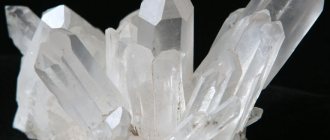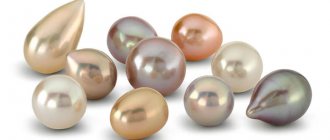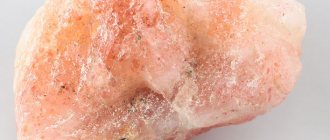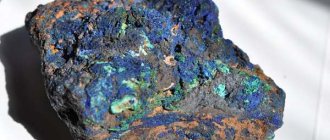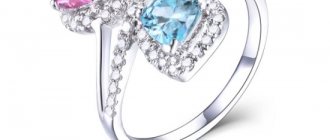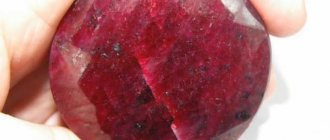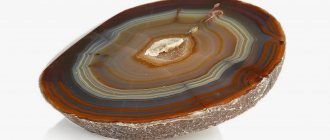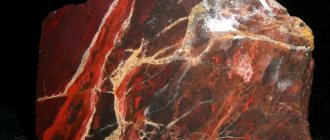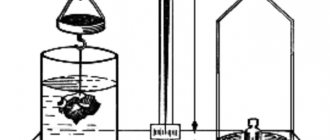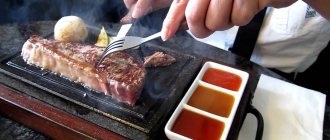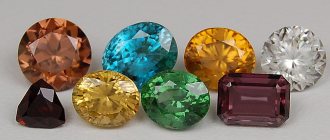History and origin
Zircon has been known to man since antiquity. In the 3rd century. BC. the ancient Greek scientist Theophrastus mentioned it in his treatise “On Stones”.
The ancient Roman naturalist Pliny the Elder described zircon 400 years later in his work “Natural History”.
The Hermitage houses zirconium cameos dating back to the 2nd century. BC. Interesting! The Bible says that pink zircon is one of the 12 stones that decorate the wall of Heavenly Jerusalem.
Christians dedicated the stone to the Apostle Simeon. The name of the gem is of Arabic origin and is translated as “the color of gold . Stone was brought to medieval Europe from Persia (Iran) and India. Then it was often confused with topaz, sapphire, amethyst, and colorless cut samples were passed off as diamonds.
The confusion ended in 1783, when the German mineralogist Abraham Werner identified zircon as an independent mineral.
In Russia, they adhere to the classification of minerals of the Soviet scientist Kievlenko, who classifies zircon as a fourth-order precious stone along with amethyst, chrysolite, and tourmaline. For jewelers, transparent and red types of gems are of value .
The origin of zircon is magmatic; the mineral is found in granites, pegmatites, and syenites. The average size of crystals does not exceed a few millimeters; large jewelry samples are rare.
From India to Europe
Our gem is mentioned in the sacred books of India “Mahabharata” and “Rigveda”.
The Indians dedicated the stone to the mythical dragon, which causes lunar and solar eclipses.
The gem arrived in Europe along the Silk Road from Ceylon.
There is information on the Internet that Theophrastus called zircon lincurion . The word comes from “lynx” (lynx) and “oiron” (urine). According to legend, lincurion was congealed lynx urine. However, Theophrastus writes that lincurion is electrified by friction. Zircon does not have this property.
Pliny wrote about “melichris, as if shining through gold like pure honey. India gives them." Current researchers believe that we are talking about zircon.
In ancient Russian manuscripts the gem was called yakinth, jacinth, yacinth .
Expert opinion
Semenishcheva Polina
Specialist in mineralogy. Graduated from St. Petersburg Mining University.
Note : in the old days zircons were used as an imitation of diamonds.
origin of name
There are two versions:
- From “zargun” (Zargun, from “king” gold and “gun” - color; from Persian).
- From the Arabic “tserkvin” - brightly colored.
It is believed that the stone received its name from A. Werner, a famous mineralogist. By the way, it was he who developed the mineral hardness scale. F. Moos improved it a little; It is this scale that we still use to determine the hardness of a stone.
Expert opinion
Semenishcheva Polina
Specialist in mineralogy. Graduated from St. Petersburg Mining University.
W. Brickman was the first to use the name “ zircon ” .
Physicochemical characteristics
Zircon belongs to the group of silicates . Their distinctive feature is a large number of impurities. This explains the variety of gem colors - from colorless to yellow, green and red.
Zircons contain iron, manganese, aluminum, copper, zinc, and uranium in varying quantities.
Important! Large opaque zircon crystals, especially green ones, have increased radioactivity. Such samples cannot be kept at home and jewelry cannot be made from them.
Physical characteristics of the stone:
- hardness on the Mohs scale – 7–8, diamond hardness – 10;
- rich, strong shine;
- fragile;
- samples differ in their ability to transmit light;
- crystals have the shape of a prism and a pyramid;
- transparent or translucent.
Zircons do not dissolve in acids and can withstand exposure to chemicals . When exposed to high temperatures, they change color.
Place of birth matters
The type of crystal depends on the environment. If the gem grew in granite pegmatites, then the crystals grow long-columnar. Alkaline pegmatites - the crystals are born bipyramidal, short-columnar.
Zircon crystal, Pakistan
Cluster of three complex zircon crystals
For birth, zircon prefers igneous and metamorphic rocks.
Since the hardness of the crystals is high, they can be found in placers.
Place of Birth
Deposits of jewelry zircon suitable for cutting are a rare occurrence. The main deposits are located in Sri Lanka, Thailand, Vietnam, China, Tanzania .
A small amount of gems is supplied by Norway, the USA, Australia, and Brazil. Simple zircon is found everywhere in gneisses and sodium-rich rocks.
Since the 19th century Transparent zircon is mined in Russia, in emerald mines in the Urals .
Placers of the mineral were discovered in Transbaikalia, Tuva, Primorye, and on the Kola Peninsula. In Yakutia, the stone is found among diamond deposits.
Zircon or zirconium
There is an opinion that these are different names for the same jewelry stone. In order not to get into trouble when buying jewelry, you need to define the concepts of zircon and zirconium, what is the difference between them.
Zircon is a natural stone . Zirconium is a chemical element, a silvery metal, located in the periodic table at No. 40. It is mined from natural minerals, including zircon. This metal does not exist in its pure form. The element was first isolated in the mid-19th century. It does not oxidize, does not corrode, and is easy to process.
Cubic zirconium is called cubic zirconia - an artificial double of diamond . To create it, zirconium powder is oxidized and heated. Iron, chromium, vanadium, and neodymium are added to give the element different colors.
The result is an imitation diamond, which after cutting sparkles no worse than a natural crystal. Jewelers are replacing expensive natural gems with cubic zirconia.
Important! The answer to the question whether zirconium is a gemstone or not is negative. Dishonest sellers pass off cubic zirconia as natural zircon, so buyers need to carefully study the documentation for the jewelry.
Variegated mix
There is a rumor that the Grand Master of the Masonic Order wears a ring with a zircon on the ring finger of his left hand. Whether it’s true or not, we don’t know; we didn’t shake hands with the Grand Master...
Zircon is considered the stone of secret societies. The second name of the gem is “the stone of the mafia,” hired killers.
Esotericists say that the crystal must be cut. When treated as a cabochon, the stone “becomes unmanageable.”
In Russia, zircon was highly respected... by thieves. It was believed that the stone could make the owner invisible.
Advice : buy jewelry with natural stone only in reputable jewelry stores. There the stones are tested for radioactivity.
At the London Natural History Museum. The local collection of zircons was collected by Sir A. Church.
Important : do not confuse a natural gem with cubic zirconia - it is also sometimes called zircon. And completely in vain.
Main types
Zircon crystals have a variety of colors, which allows them to be classified by shade . Where the stone is mined also affects the physical characteristics of the crystals. Based on these characteristics, geologists have identified the main subgroups of the gem.
Hyacinth
The blood mineral, a symbol of unhappy love, is similar to ruby and garnet . Has a bright shine and is transparent. The stone is named after the Greek prince Hyacinth, who died at the hands of his friend the god Apollo.
While playing with the disc, the circle thrown by the god bounced off the ground and hit Hyacinth in the head. The young man’s blood turned into purple flowers, which petrified and scattered on the ground like pink, red, brown stones.
Red minerals are mined in Sri Lanka, Madagascar, France, and Germany . Brown samples are found in Yakutia, USA, and Mozambique. Red-brown gems are common in Primorye and Australia.
Jargon or jargon
Zircon is yellow (Siamese), transparent, with a pronounced diamond shine. The name of the stone is a transformation of the Persian word “tsargun” (golden). There are samples from light lemon to rich yellow.
The main suppliers of jewelry jargon are the countries of Southeast Asia, Africa, and Australia. Its deposits are often found in rocks next to diamonds and chrysolites.
Starlit
Blue zircon is a rare natural mineral . The name means "star stone". Crystals of bright blue color are obtained by heating simple red-brown specimens. Of the zircons, only starlite has distinct pleochroism - the ability to change color depending on the angle of view of the observer. The richer the color of the stone, the more clearly this property manifests itself.
View this post on Instagram
Posted by Mariya Prytkova (@mariika_prytkova) Dec 20, 2021 at 1:16 PST
Indonesian miners have learned to produce starlites themselves . They put zircons in huge containers made of baked clay and place them in special ovens heated to 1000 °C. The intensity of the color of the future star stone depends on the time spent there. On average, to acquire a bright blue color, zircon needs to spend 2 hours in the oven.
View this post on Instagram
Publication from Commercially Cut Stones (@comcut.ru) November 3, 2017 at 8:11 PDT
Malacon
The color of this variety of mineral varies from olive to dark brown..
Heterogeneity in the color of the stone is often observed. The name means "soft" in Greek. The hardness of malacon is lower compared to classic zircons - 7 points on the Mohs scale. It is radioactive, and scientists use it to determine the age of terrestrial sediments. In Mozambique, specimens up to 10 cm long were found.
Matar Diamond
Transparent colorless stone with strong shine, substitute for diamond in jewelry, rare mineral.
It is mined in Sri Lanka, in the Matara district. The area gave the name to the gem. To obtain crystals similar to Matar diamond, zircons are exposed to gamma rays. As a result of processing, stones lose color.
Questions/Answers
The mineral has many mysteries. Your questions will help us find answers.
Are there three of them?
Let's separate the cutlets from the flies.
